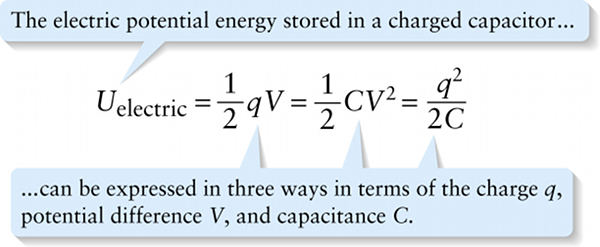Chapter 17. Electric potential energy stored in a capacitor (17-17)
Question
co7o9DWIZPEhVAqSAZpGhGGQqfTUIoROgQRHBxCXKxm+/f6zxgPbr62zWMfw3Z0LfLfNojLln0Kp9qoOImcC7Eupe7k=
Question
tiD+9CMAY/PBZj4usPbiYW8WZjk0xpHTxVQ61Vu0sZ3S+WIekwyfGj/N4HxOWqztLYSdG7Jb9t6Z9bIDGkh/EPojmynHRDIQ+aIaRtJJ+kKGPWBCEV6VZjW9xTavTfe7TD3t0LuUOi3IDKehfjcHIFebEie26WDC
Review
Equation 17-17 says that the energy stored in a charged capacitor is proportional to the square of the charge \(q\) or, equivalently, to the square of the potential difference (voltage) \(V\) across the capacitor. These results are true for capacitors of all kinds, not just the simple parallel-plate capacitor that we discussed in Section 17-5.
